Chapter 12. The Crowded Ship [August 17, 1347]
Cultural Explanations
 |
Chapter 12. The Crowded Ship [August 17, 1347] Cultural Explanations |
|
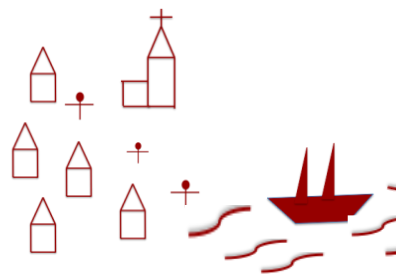 |
In this chapter Bávlos hears more about St. Henrik and boards a boat to Sweden, a boat with important passengers. |
| Ship on its way to Stockholm |
In this chapter, Bávlos hears more about the legend of St. Henrik and boards a boat to Stockholm. Bishop Hemming did indeed leave Turku in 1348 in order to carry letters for the visionary Lady Birgitta. More on that in future chapters!
Ship travel between Turku and Stockholm was both facilitated and impeded by the great number of islands that dot the coasts on both sides of the Baltic Sea. Here is a map of the area outside of Turku from an excellent navigation site.
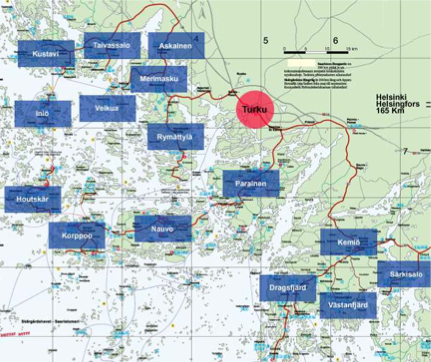 |
| map of the Turku archipelago from http://www.saaristo.org/fi/karta.htm |
As you can see, finding your way between this many islands of various sizes can be very tricky, particularly as the depth between different islands varies greatly. Here is a closeup of one area within the archipelago that gives you a further inkling of the complexity of travel.
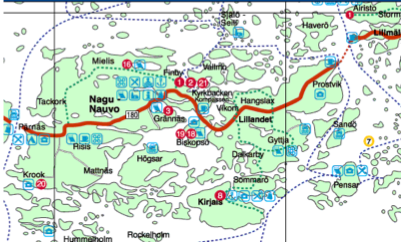 |
| As the placenames here suggest, most of the settlements in the archipelago are Swedish-speaking |
There are all sorts of islands in these coastal archipelago regions: some inhabited, others low tidal skerries that are above the surface only part of the day. In ancient Finnish epic songs, the hero Väinämöinen is said to have raised his knee from where he was floating on the waves in order to allow a waterfowl to build a nest there and lay her eggs. You can see how much some of these low islands look like knees or elbows or other body parts jutting up out of the water. In the medieval period, it was crucial to pass through such dense island areas in the light so that hazards could be seen and avoided. This is the reason why the ship's getting held up by currents or other strange forces is so worrisome to the captain.
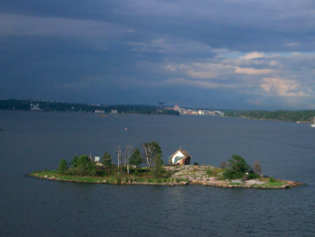 |
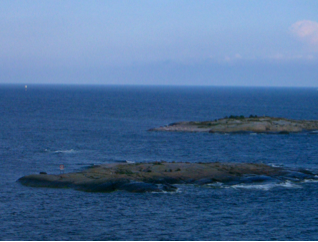 |
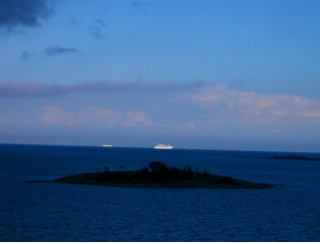 |
| settled island offshore, Helsinki | low tidal skerries, Turku archipelago | modern cruise ferry at nightfall, passing out of archipelago |
The notion of stopping a boat mid-voyage is a familiar legend about Sámi in medieval and early modern Scandinavia. Sámi were said to be able to stop a boat in its course until they were appeased. Sometimes they did so to prevent a person from making off with stolen goods; sometimes they stopped boats simply because they were irritated. For this reason, many captains feared permitting a Sámi on board, even as a paying passenger. I remember meeting commercial fishermen in Seattle—Norwegians in cultural background—who still lived by the adage "Never let a Finn [i.e., a Sámi] on board." In the story, both the captain and Pekka seem to know this tradition, although neither says it aloud in front of Bávlos.